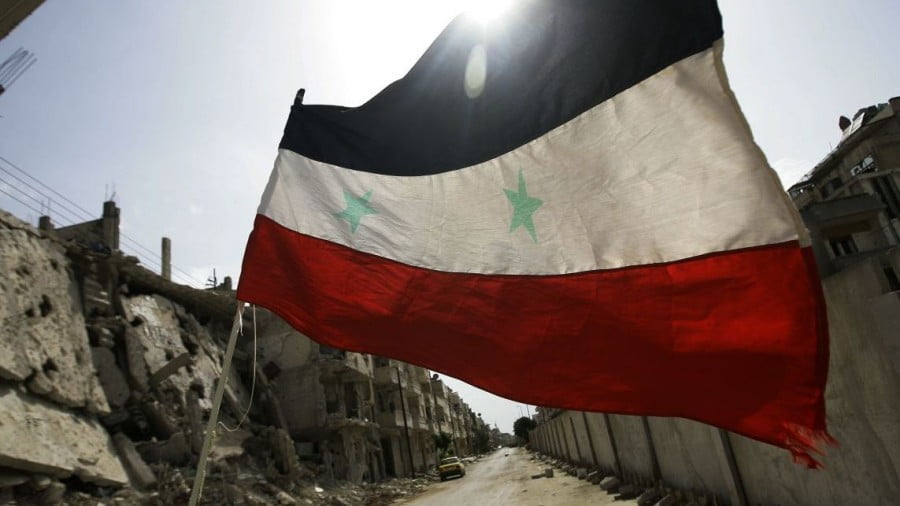Big War in Syria and World Cup in Russia Start This Week
Syria’s forces are ready to launch an offensive in the South aimed at liberating the Daraa-as-Suwayda-Quneitra area. Leaflets calling on militants to lay down their arms have already been air-dropped. The deadline has been set for June 14 — the day the World Cup kicks off in Moscow. Syria’s armed forces are going to defend their homeland and kick out the invading terrorist gangs. The security concerns expressed by Israel and Jordan have been taken into consideration. The Syrian government has promised that no Iranian or pro-Iranian forces will take positions close to Israeli or Jordanian borders. All other issues can be addressed and negotiated. If need be, Moscow can act as a mediator as it has successfully done before.
At first glance, having government forces take control of the territory would seem a much better option than leaving these swaths of land to the terrorists. But no, the prospects of the militants’ defeat has upset some of the actors involved. The US has already warned Syria against launching an offensive, telling that national government what it can and what it cannot do on its own territory. But the measures taken to obstruct the liberation of the southern part of the country are not limited to voicing warnings and concerns.
It had been a long time since the Islamic State (IS) had been portrayed in the media as a force to be reckoned with. It had been reduced to insignificance and held only small areas. There were other jihadist gangs that posed a bigger threat. Just a few days ago, it seemed clear that the terrorist-held land in the South was the only relatively large area still outside of the government’s control and that the final victory over the jihadists was close at hand. Now the situation has drastically altered. Watching the ever-changing map (Syria Live Map), one wonders how such developments could occur. No doubt there is a plan to direct the situation as it evolves and nothing is being done without a purpose.
All of a sudden the IS forces, evidently reinforced and well supplied, reappeared to attack Sukriah and Al Hamdan. On June 7, IS militants advanced to Abu Kamal. In one day they took control of 90 km2, including the road connecting the Т2 Pumping Station and Mayadin, allowing them to cut off the supplies from Deir-ez-Zor provisioning the Syrian forces positioned at the T2 Station. This paves the way for them to block the Palmyra-Abu-Kamal highway. This advance does more than just divert the government troops’ efforts from other fronts.
The IS militants were attacked on June 4 and 5 by SDF forces supported by US aviation at As Shahaf, forcing them to retreat westward, crossing the Euphrates River near Abu Kamal. There is nothing preventing the jihadists from receiving reinforcements from Deir ez-Zor and El Haseke and the Iraqi province of Nineveh. Their movements are unobstructed by the US-backed force. That’s exactly what Russia Foreign Minister Sergey Lavrov said in late May — IS forces have reappeared in US-controlled areas of Syria. Many of them join the so-called New Syrian Army units operating near the city of Deir ez-Zor. Others move to the area where the American al-Tanf base is located. Mr. Lavrov emphasized this fact and warned about the dire consequences.
Almost at the same time combat operations flared up quite unexpectedly in the desert area between As Suwaydah and Damascus. An enclave materialized, controlled by jihadists and encompassing several villages and areas of high elevation, from which they began surveying the area and shooting from the hills at the approaching enemy. If the IS militants are driven out — and soon they will be — the Free Syrian Army (FSA), which is positioned about 35 km. from the battle area, will get more soldiers to fill its ranks.
The question is — where did the IS forces come from, enabling them to suddenly appear deep inside Syrian army positions? The only answer could be from the Syrian-Jordanian border, which is regularly crossed by militants trained at the Rubkan refugee camp on the Jordanian side of the frontier. And they had to cross more than 40 km. of land controlled by the Syrian army. Obviously, the rebels were well informed about the secret passages that exist and deftly took advantage of the weak points in the organization of the Syrian Army’s defenses.
Their mission is clear — to divert Syrian strike troops and gain time for the rebel forces in the south to erect fortifications and prepare for a counter-offensive. The number of rebel forces there has grown considerably recently, exceeding 12,000 according to some estimates.
The Southern Front rebel forces possess small Omar Scud-type ballistic missiles and Zelzal-2 unguided, long-range artillery rockets that are able to inflict serious casualties. The group receives supplies from Jordan that arrive in the guise of “humanitarian aid.”
Reinforcements will keep on coming until Syrian army units block the M5 Aleppo-Damascus highway and the road linking the Syrian city of Daraa with Ar Ramtha in Jordan. But the new front opened with the help of the US military is keeping the Syrian forces busy that are needed to launch an offensive in the South. If the Free Syrian Army captures the town of Mahajjah, the large Syrian army force in Daraa will be encircled.
On June 11, the Russian Defense Ministry warned that the FSA fighters assisted by US special operation forces are preparing to stage a provocation in the form of a chlorine attack, in order to provide a pretext for US air strikes against Syrian government forces. We are in for a big war in Syria that will start at almost the same time the World Cup in Russia kicks off. It’s important to know in advance who started the whole thing and who should be held responsible for the consequences.







